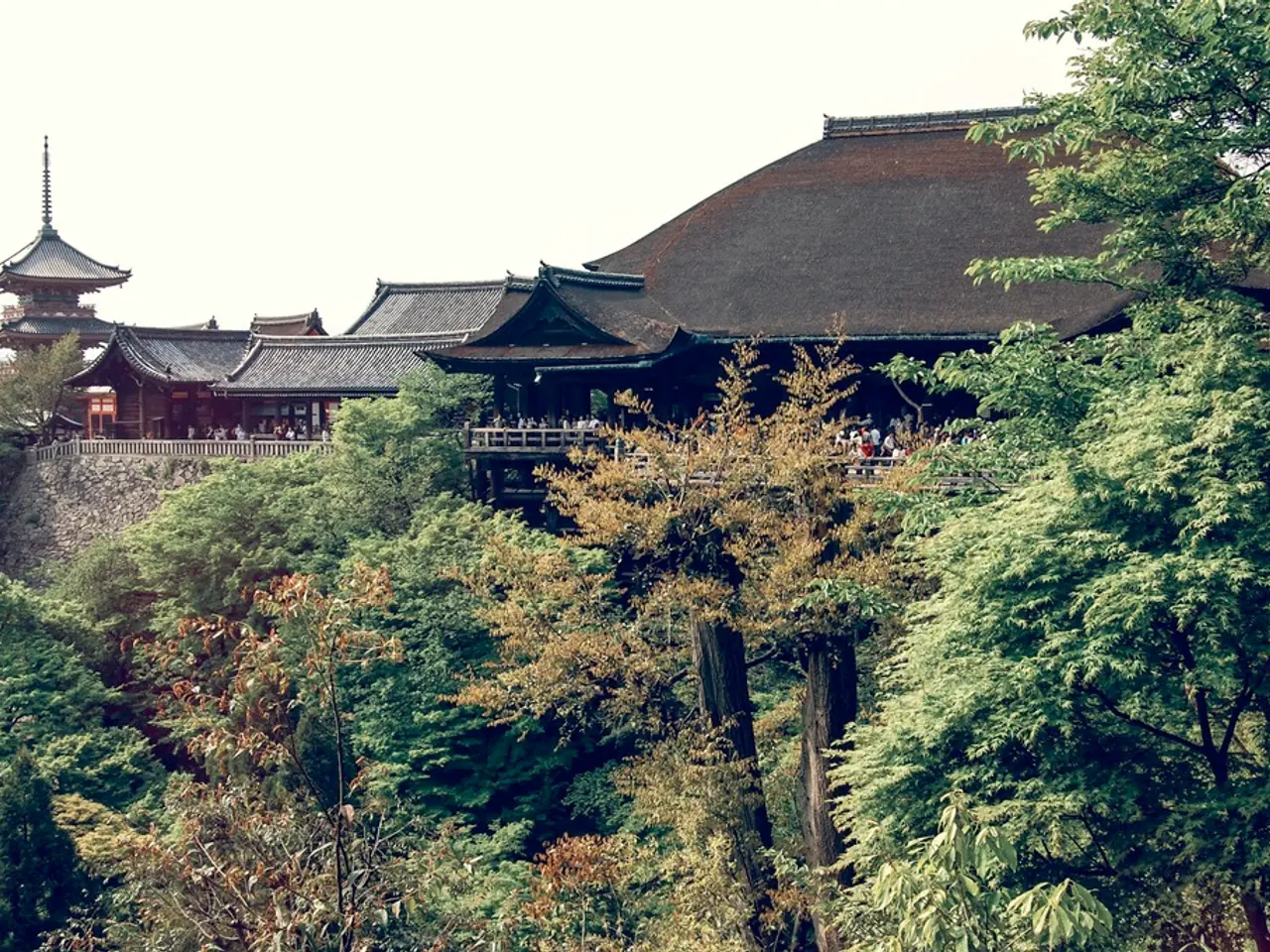Ancient Trees Worldwide and the Mysteries They Harbors on Earth Day
Ancient Trees: Guardians of Our Planet's History and Health
In the heart of nature, there lies a group of remarkable trees that have stood the test of time. These ancient sentinels, some over 5,000 years old, offer a unique glimpse into our planet's past and play a crucial role in its future.
Let's begin with the Methuselah Pine, a Great Basin bristlecone pine in California, approximately 4,856 years old. This ancient tree, older than the pyramids in Egypt, is a testament to survival in harsh, windswept terrain. Its twisted trunk and sparse needles are a testament to the tough conditions it has endured. The exact location of Methuselah is kept secret to protect it from harm.
Another contender for extreme age is the Yew tree, which can live for over 5,000 years. The Llangernyw Yew in North Wales is between 4,000 and 5,000 years old and is known for its resilience in regenerating from almost any damage.
The world's oldest known non-clonal tree is the Methuselah Pine, but there are other ancient trees worth mentioning. Pando, a trembling aspen colony in Utah, is estimated to be about 80,000 years old, though individual trees live around 130 years. Pando weighs over 6,000 tons and spans more than 100 acres, making it one of the world's largest and heaviest living things.
In the Patagonian region, the Gran Abuelo and the Patagonian cypress are notable. The Gran Abuelo, hidden in Chile's Alerce Costero National Park, is thought to be over 5,400 years old, while the Patagonian cypress is approximately 3,600 years old. The Fitzroya's wood was once used as currency by local peoples.
These ancient trees are not just relics of the past, but they are also living records of Earth’s climate history. Tree rings can be used to reconstruct past climates and understand how trees have adapted to their environments over millennia. Each passing century, the Methuselah Pine records subtle changes in its rings, offering scientists clues about climate shifts and environmental changes that go back millennia.
Their longevity and ability to thrive in harsh conditions display natural strategies of survival and adaptation, offering insights into ecosystem resilience in the face of environmental stresses such as drought, storms, and temperature extremes.
In terms of their impact on our planet, these ancient trees matter greatly for climate change and environmental conservation. They play a vital role in our planet's health by stabilizing soil, preventing erosion, supporting ecosystems, and storing carbon. Trees, especially long-lived species like Yew and Cottonwood, capture and store carbon dioxide, thus mitigating global warming by reducing atmospheric greenhouse gases.
Moreover, trees like Cottonwoods and ancient bristlecone pines create critical habitats for wildlife, contributing to ecosystem health and resilience. Their root systems stabilize soils and improve water quality, which supports broader environmental sustainability.
One of the most intriguing ancient trees is the Wollemi pine. Wollemi pines in the wild are believed to be up to 1,000 years old, with their genetic lineage stretching back 200 million years. This tree was thought to be extinct for millions of years until a small grove was discovered in a remote Australian canyon in 1994.
Lastly, there's Jōmon Sugi, a Japanese cedar on Yakushima Island, estimated to be at least 2,000, possibly up to 7,000 years old. Another remarkable tree is Old Tjikko, a Norway spruce in Sweden, which has been cloning itself for nearly 10,000 years, with its visible trunk only a few hundred years old.
In conclusion, these ancient trees are both living records of Earth’s climate history and active contributors to carbon storage and ecosystem balance. Their preservation is a crucial component in efforts against climate change and for environmental conservation.
- These ancient trees, such as the Methuselah Pine and the Llangernyw Yew, offer valuable insights into climate change research, considering their longevity and ability to record subtle changes in their rings.
- The ecosystems these trees inhabit also benefit from their presence, with their roots improving soil and water quality and their habitats supporting a variety of wildlife.
- Energy conservation is another area where these ancient trees play a role; trees, like Yew and Cottonwood, capture and store carbon dioxide, contributing to the mitigation of global warming.
- The health-and-wellness benefits of these trees extend beyond the environment, as they contribute to fitness-and-exercise routines through forests' natural routes and provide health-boosting phytoncides.
- The science of environmental conservation relies heavily on the information gathered from these ancient trees, as they provide a unique perspective on how plants have adapted to and survived the aging of our environment.
- As our planet faces the challenges of climate change and aging ecosystems, the preservation of these ancient trees becomes increasingly vital for maintaining the balance of our climate and our planet's overall health.




